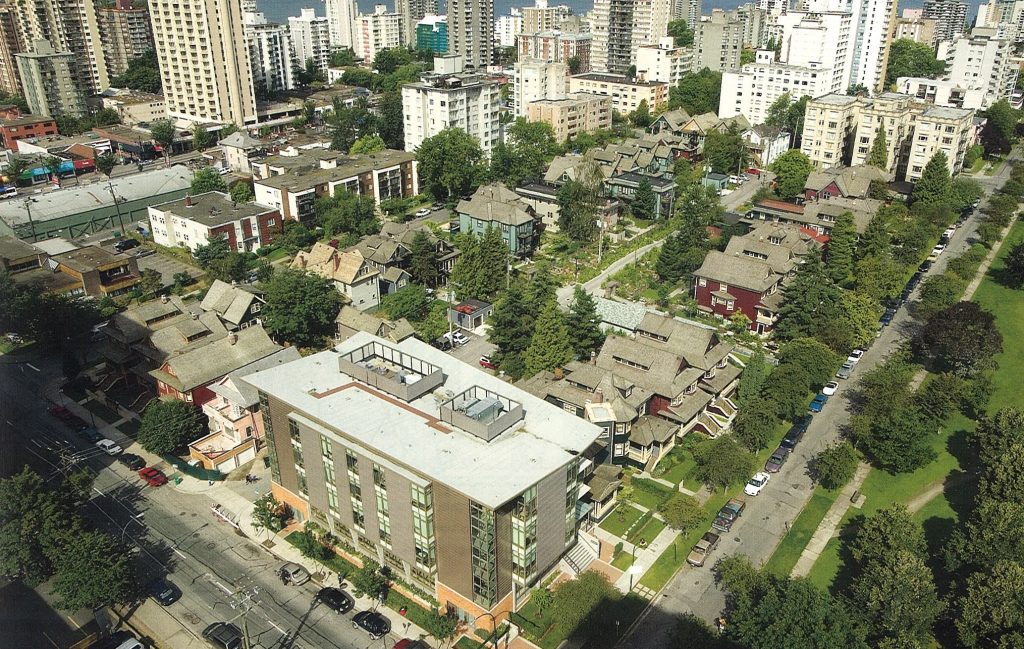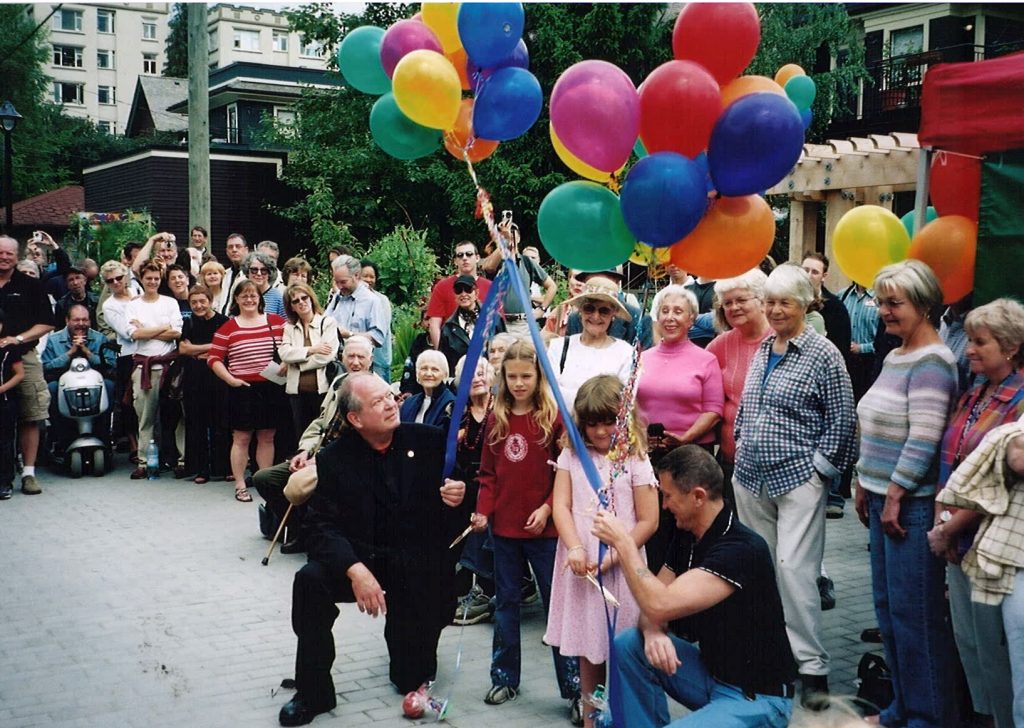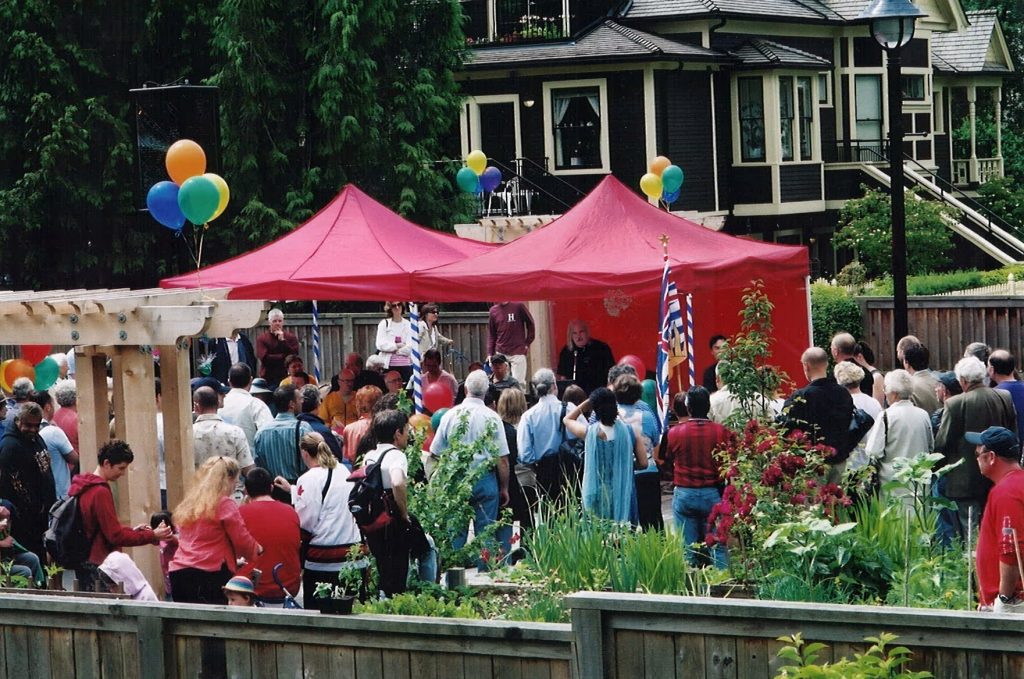
Mole Hill survives as Vancouver’s last intact heritage block. This happened through a serendipitous blend of economics, shifting urban needs, community activism, education and hard work.
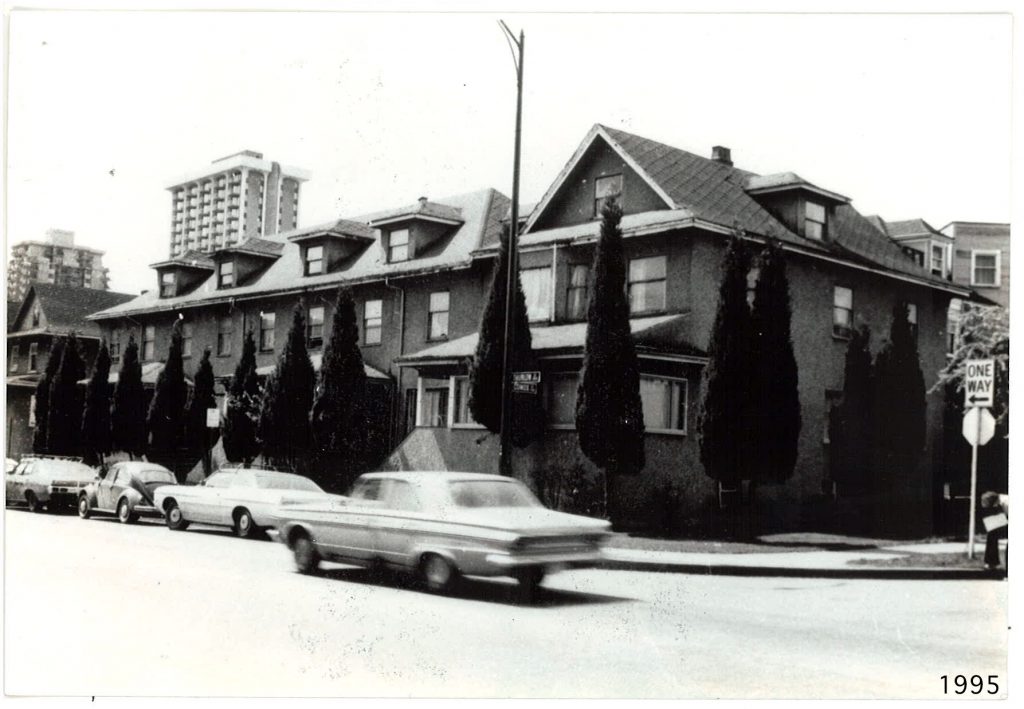
By the mid-Twentieth Century, the West End was becoming increasingly populated. Apartment buildings were taking the place of single-family homes.
As the population density of the area increased, it became clear to the Parks Board that the West End needed more green space. To that end, the City of Vancouver started buying properties in the 1950s, around what has now come to be called Mole Hill.
Over the next 2 decades houses on the neighbouring block were razed in groups to create present day Nelson Park.
In the late 80s and early 90s, it became clear that the Parks Board was planning to remove the Mole Hill homes.
By 1992 they stopped re-renting the suites when they became available and 1995 there were more than 70 vacant suites.
In June 1995, a report for the City of Vancouver proposed three alternatives for the block. All of the scenarios included the removal of about half of the heritage houses and the construction of six-to-eight storey apartment buildings. The most lucrative plan included a 20-storey building on Pendrell Street, which would net the Parks Board $6 million.
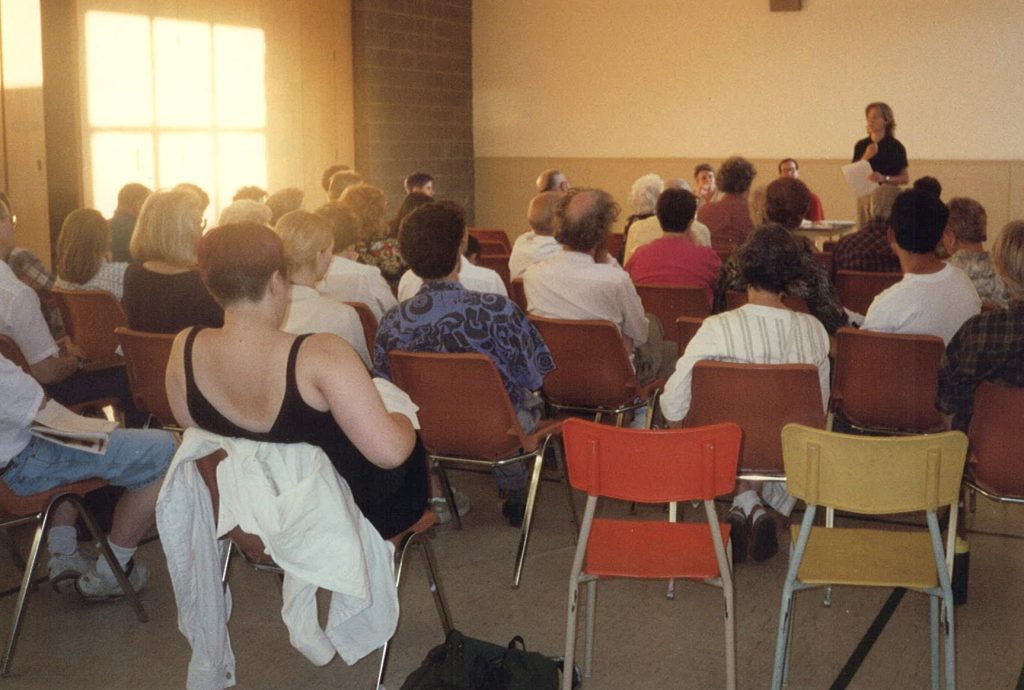
The groups’ interest in preserving the block was rooted in a mandate of community vision. Their plan was committed to retaining affordable housing, green-space and gardens on the block, as well as preserving the social history and heritage architecture.
Before the 90s, the block was known as “Nelson Park”. The preservationists used the name “Mole Hill” to give it a distinct identity, recognisable as separate from the nearby park. The name is both historically and geographically descriptive as the block sits on the highest point of the West End, and the earliest settlers to this area were thought to be Henry and Elizabeth Anne Mole. The City of Vancouver formally name for the block in 1996.
Of huge benefit to the fight to save the block was the research done by Blair Petrie. His 1996 book “Mole Hill Living Heritage” honoured the history of the area and was a hugely effective tool in educating City Hall and public alike. In 2004 Blair received a Heritage Award of Merit for the advocacy and research and advocacy he did on behalf of the threatened homes of Mole Hill.
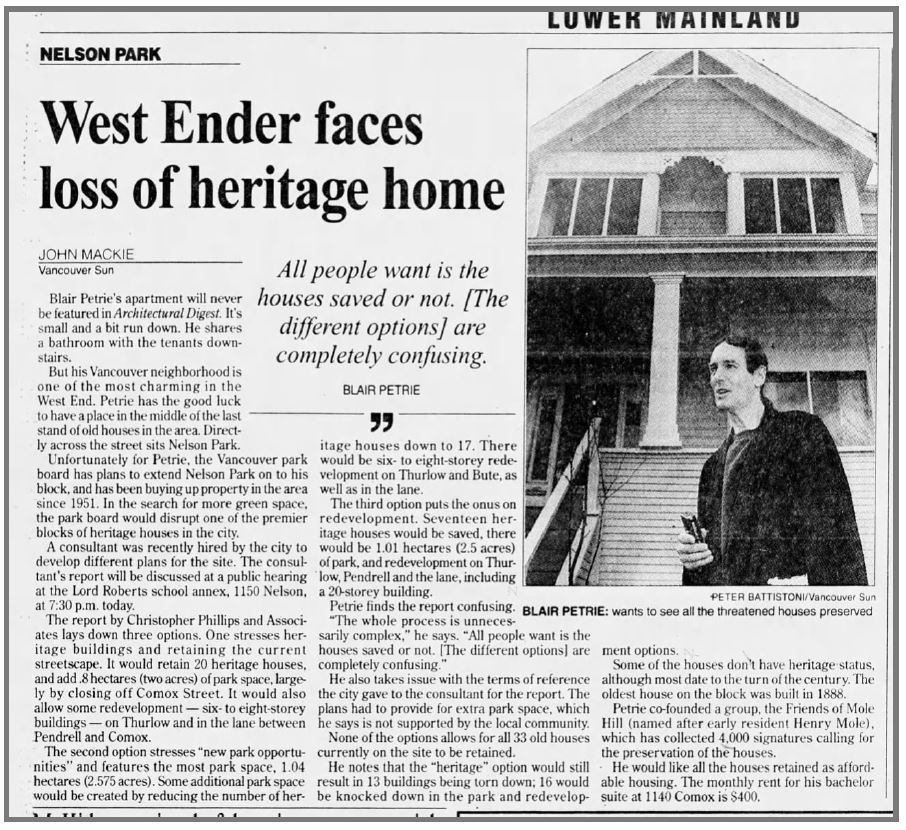
In response to the approaching threat of destruction, a group of committed community members formed the Mole Hill Living Heritage Society. A larger coalition called “The Friends of Mole Hill” was created as an umbrella organization for more than thirty community-focussed organizations and for individuals who cared about the future of Mole Hill.
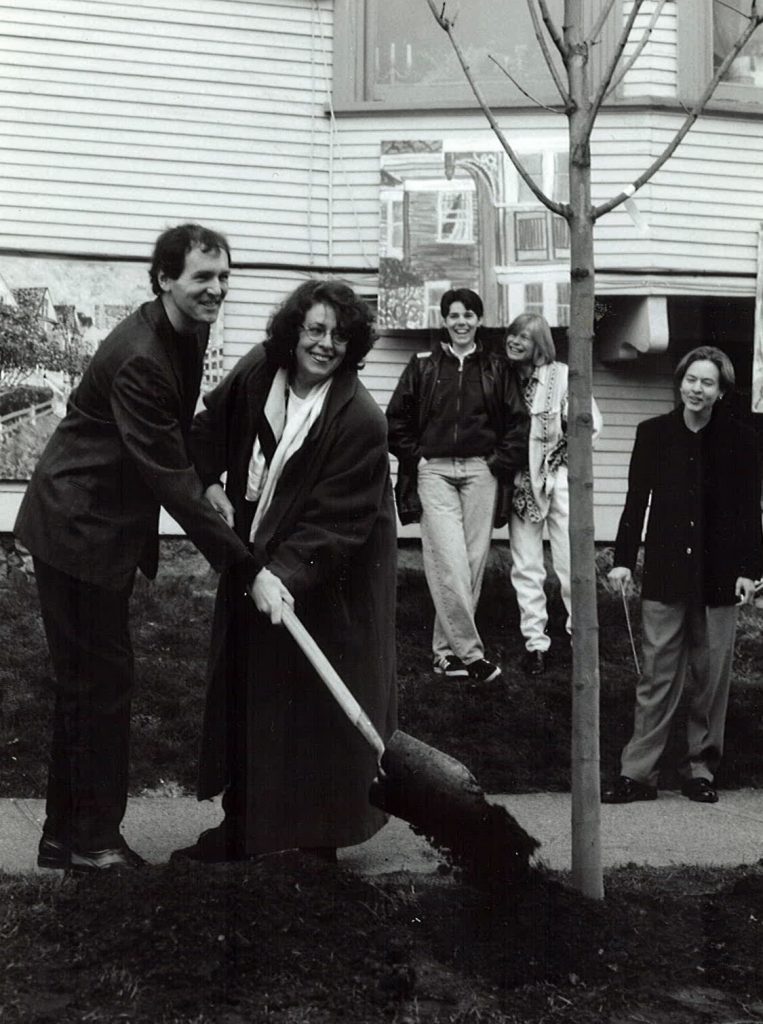
Public education regarding the history of the neighbourhood was facilitated by informational boards in front of the homes, and handouts available to passers-by. There were protests at City Hall, and long afternoons on Davie St. where activists would engage other West End residents, soliciting signatures and providing history.
When the Province of BC agreed to help fund the project, it was only a matter of time before the City of Vancouver also came on board.
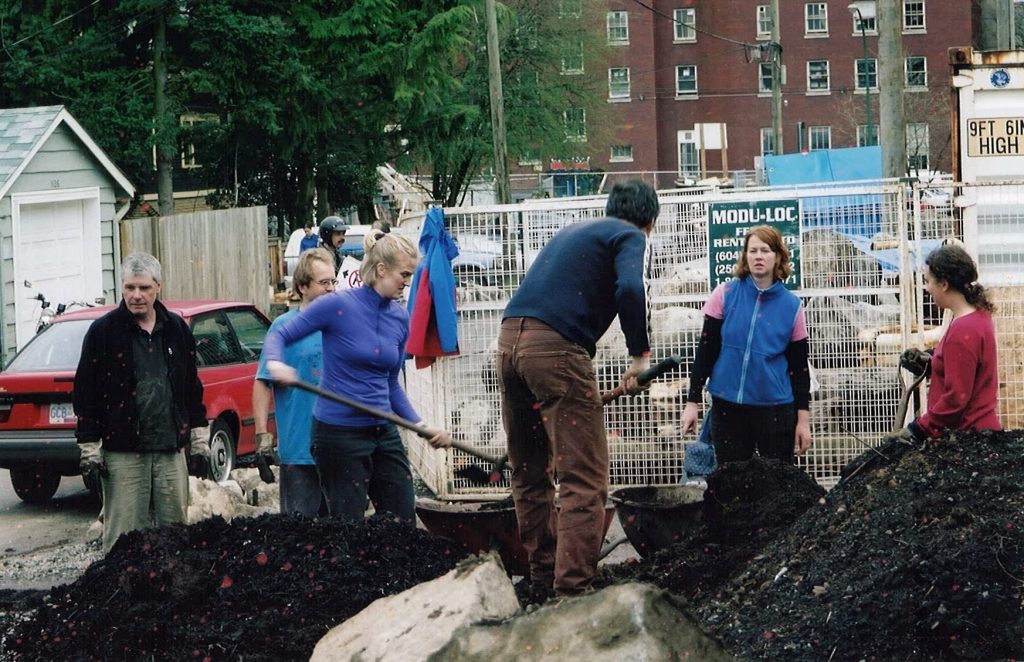
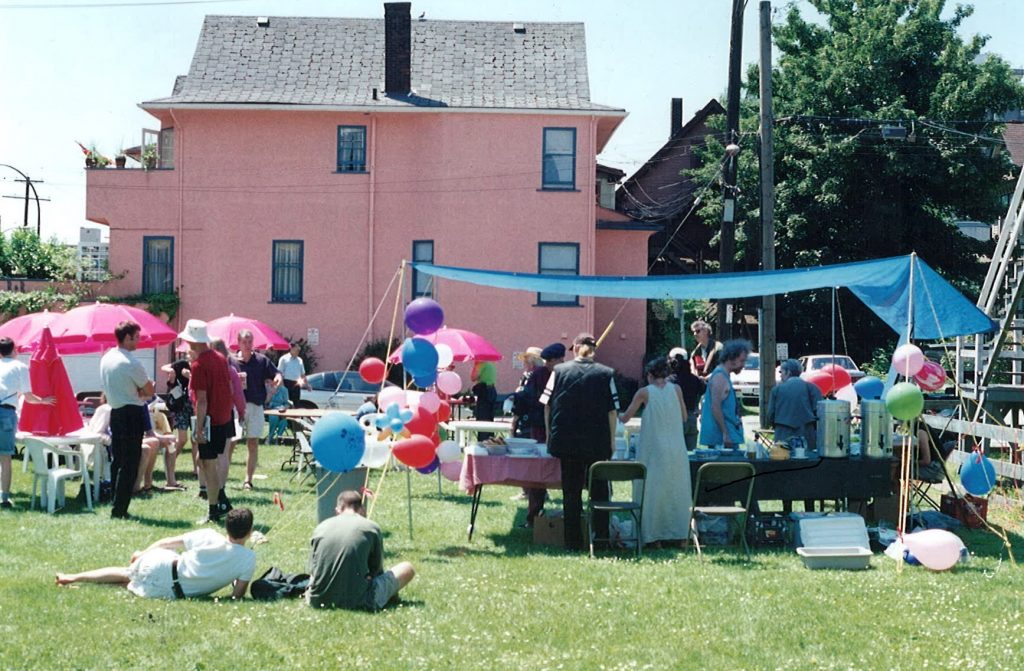
The wide variety of community groups brought ideas that would benefit the whole community. Thus, daycares, community gardens and a group home were added to the vision, the Dr Peter Centre was proposed for the vacant lot on the corner of Comox and Thurlow Street and the laneway was redesigned according to a European “woonerf” concept – a “living street” which prioritises pedestrians.
The Friends of Mole Hill were integrated into the restoration and reconstruction – from the architectural design to the construction of the laneway gardens to the administration of the project. The Mole Hill Living Heritage Society became the Mole Hill Community Housing Society, which operates the block to this day.
“Never give up!”
Jane Jacobs to the Mole Living Heritage Society in 1998.
Maintaining and restoring the heritage features of the houses was a major priority in the Mole Hill project. Heritage features inside and out were retained and restored. Outdoor space was redesigned for gardening, indigeous plant and wildlife habitats, common areas for tenants and public space in lieu of the parkspace that was originally envisioned for the block.
The advocates for Mole Hill never did give up; and through all their commitment, belief and vision, the homes of Mole Hill were preserved and restored in a responsible and socially mindful way.
